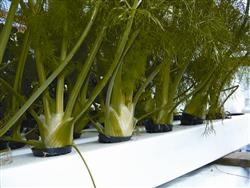COURSE STRUCTURE
The course comprises 12 lessons, as follows:
- Basic Chemistry and Plant Nutrition - atoms, elements, nutrient deficiency symptoms
- Nutrient Solutions - calculating formulae, hydroponic nutrition, preparing nutrient solutions
- Types of Systems A - classification of hydroponic systems, ingredients of hydroponic systems, rockwool.
- Types of Systems B - what makes up a system, 16 hydroponic ideas, NFT, solution dispensation.
- Plant Problems in Hydroponics - pests and diseases, nutritional and environmental problems, water and plant relationships, pH.
- How a Plant Grows - growth, nutrient solutions, preparing a solution, mechanisms of nutrient uptake, photosynthesis.
- Plant Culture - controlling environmental features, post harvest storage.
- Hydroponic Vegetable Production - how to grow vegetables hydroponically.
- Hydroponic Cut Flower Production - growing flowers in hydroponics, carnations.
- Soil Media vs Nutrient Film - berries, indoor plants, types of media, NFT.
- Greenhouse Operation & Management - solar energy applications in horticulture, greenhouse management.
- Special Assignment - a report on how to improve your present hydroponic venture, or a report on planning a new hydroponic venture.
Each lesson culminates in an
assignment which is submitted to the school, marked by the school’s
tutors and returned to you with relevant suggestions, comments and if
necessary, extra reading.
What is Hydroponics?
Hydroponics
is the process used to grow plants without soil and literally means
“working water.” The grower is taking control of the plant’s root
environment and losing the benefit of mother nature’s finely tuned
mechanisms which normally control part of the plants development. So
therefore, when you remove the soil from a plant and take control of its
roots, it is essential that you have a good understanding of how it
grows.
Hydroponics is not an easier way
to grow plants! It is a more controlled way of growing plants. However,
it is not a magical way to grow plants either. Anybody can grow plants
in soil with reasonable success but to grow plants in hydroponics, you
must understand how the plant grows, so that you can control the light
and temperature, water, oxygen and nutrients in the root zone. These
elements are all vital elements in the health and growth of the plants
growing in the system.
This
course aims to develop a solid grounding in the principles of soil-less
cultivation of plants in a home hydroponics situation.
WHAT SETS ACS APART?

At ACS we provide you with more than just a set of course notes.
Your 'learning package' includes:
- Course notes.
- Self-assessment quizzes.
- Assignment feedback.
- You can interact one on one with a professional tutor with decades of experience - just email, phone or log on to chat to connect with them.
- Depending upon your course, your studies may involve independent research, interviews, practical exercises, assessments, Problem Based Learning projects, and more.
... What next?